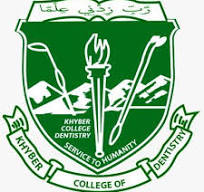TEMPOROMANDIBULAR DISORDER AMONGST UNDERGRADUATE STUDENTS OF DENTISTRY IN KHYBER PAKHTUNKHWA
DOI:
https://doi.org/10.33279/jkcd.v10i03.204Keywords:
Temporomandibular joint, Temporomandibular disorders, Undergraduate students, StressAbstract
Objective:
To determine the frequency and severity of temporomandibular joint disorders (TMDs) among male and female undergraduate students of dental colleges in KPK.
Methodology:
Totally 619 of differenct age groups students of four dental colleges in KPK were assessed for the present study started from march 2018 to Sept 2018 by using of cross sectional study design. The study was based on Fonseca’s anamnestic index FAI and its questionnaire, which is composed of 10 questions and classifies the severity of TMDs. The obtained data were coded and entered into Statistical Package for the Social Sciences (SPSS) version 22. chi-square test was used for gender association with TMD.
Results:
About 72.3% of the undergraduate students had mild to severe TMD. 438 females and 181 were males. 168 (27.1%) had no TMD, 172 (27.8%) had mild TMD,255 (41.2% ) had moderate and 24 3.9% had severe TMDs in four age groups. The result showed that the TMD degree has a association with gender ( p=0.02) and no association in age groups (p=0.97) Moreover, a high TMD rate was observed among the students (72.3%). Chi-square analysis of the frequencies of responses to every question revealed a statistically significant difference (p < 0.05).
Conclusion:
This study revealed that there is association between TMD and gender. Most signs and symptoms associated with temporomandibular disorders appear to be more prevalent in women than in men, although age patterns for these signs and symptoms does not provide any association.
Downloads
Published
How to Cite
Issue
Section
License
Copyright (c) 2020 Nighat Shafiq, Mohammed Adnan Khan, Aiman Khan, Mohammad Imad Khan, Khurshid Ali, Sarah Sajjad

This work is licensed under a Creative Commons Attribution-NonCommercial-NoDerivatives 4.0 International License.
You are free to:
- Share — copy and redistribute the material in any medium or format
- Adapt — remix, transform, and build upon the material
- The licensor cannot revoke these freedoms as long as you follow the license terms.
Under the following terms:
- Attribution — You must give appropriate credit , provide a link to the license, and indicate if changes were made . You may do so in any reasonable manner, but not in any way that suggests the licensor endorses you or your use.
- NonCommercial — You may not use the material for commercial purposes .
- No additional restrictions — You may not apply legal terms or technological measures that legally restrict others from doing anything the license permits.









